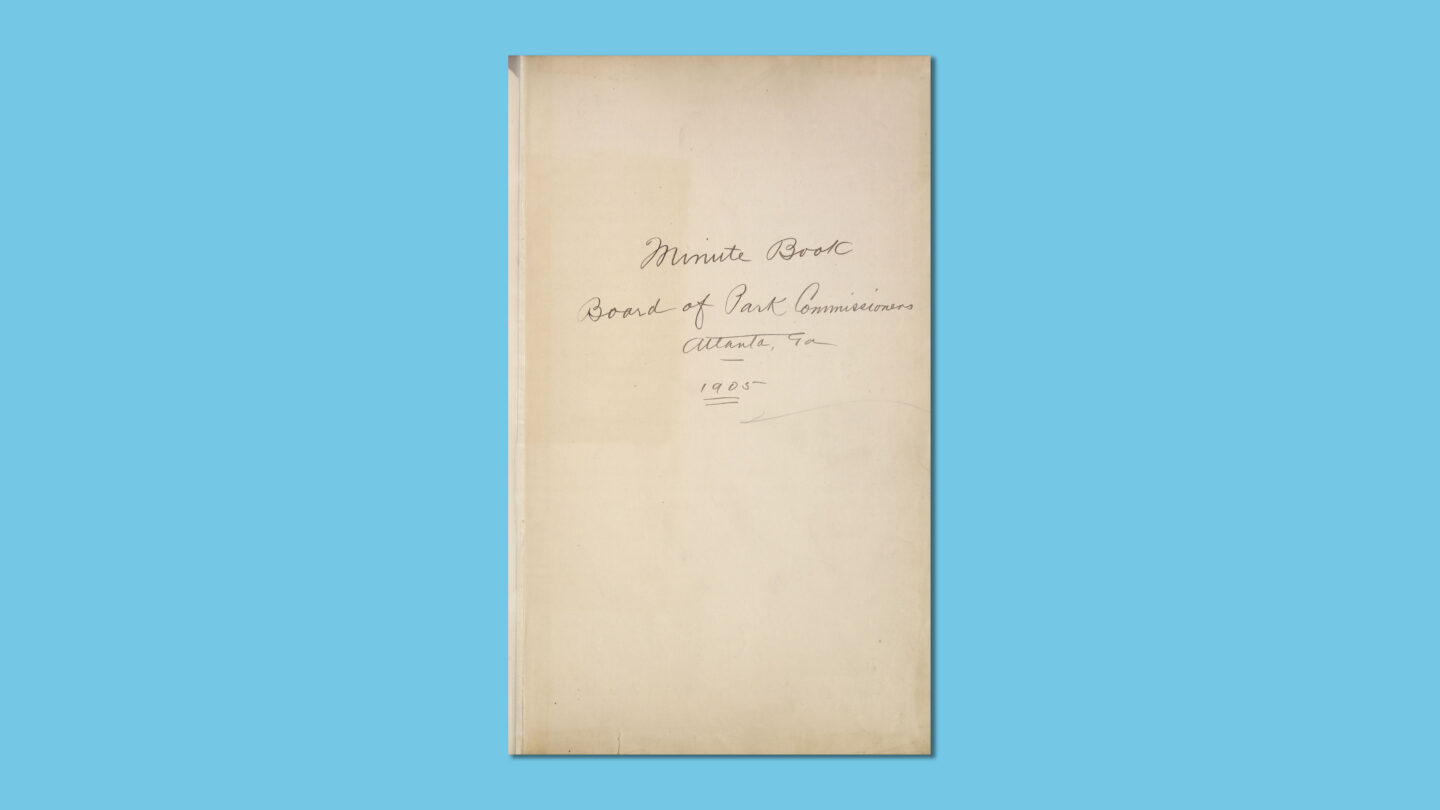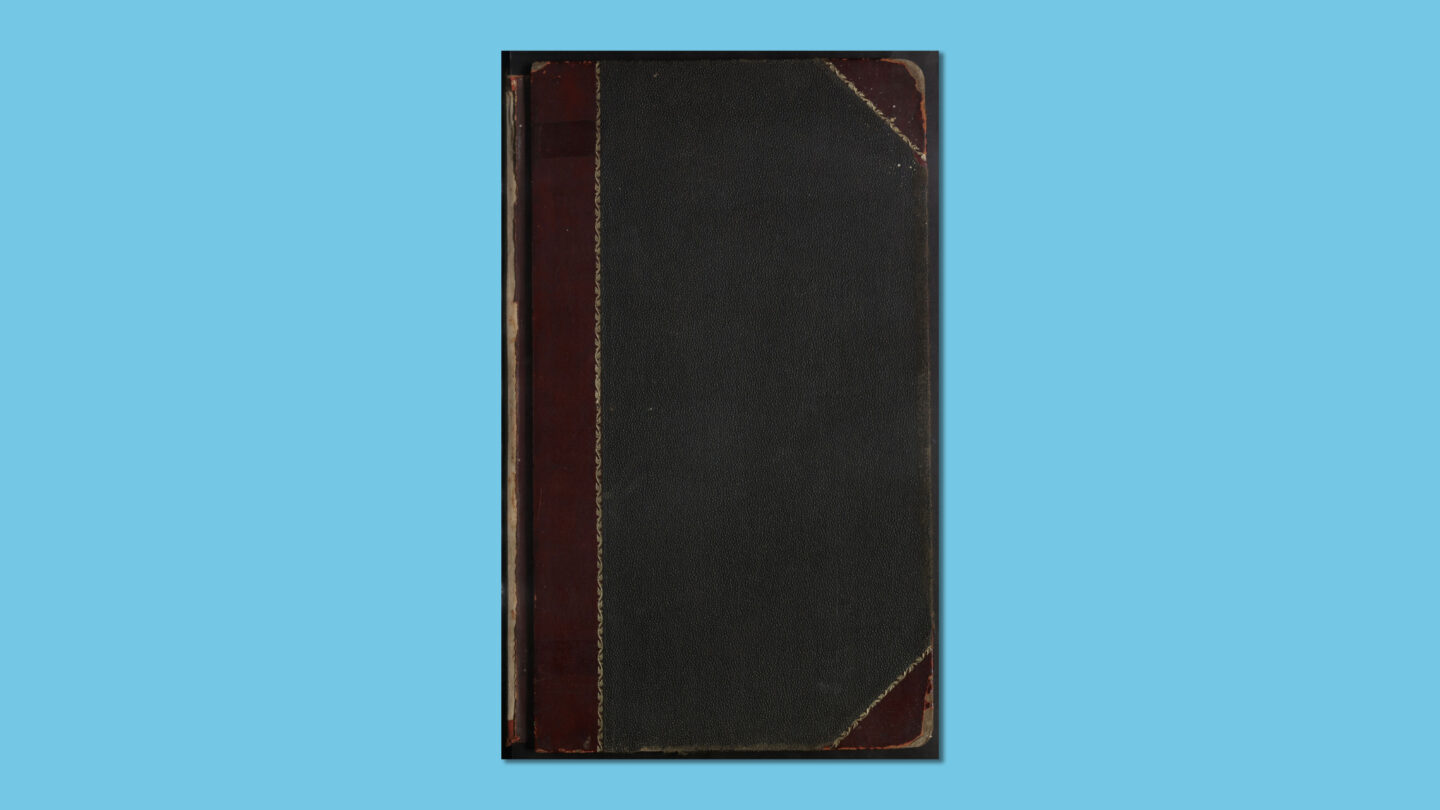At first glance, the Board of Park Commissioners Minute Books for Atlanta may seem ordinary, even inconsequential. Yet, these resources hold significant information, reflecting the intersectionality of race, gender, and class in urban spaces during the early 20th century. Minute books are the written record of what is said and done in meetings. Their contents reveal the discussions and decisions of the park commissioners, an all-white, male governmental body, during part of the Jim Crow era.
Minute books of the park commission meetings are now available digitally online for research. The first book ranges from January 1905 to March 1906; the second, from April 1919 to the last meeting in 1939. These minute books are part of the records donated by Park Pride (MSS 1158) to the Cherokee Garden Library collection of Kenan Research Center. Park Pride is a nonprofit organization that works with Atlanta communities to improve their parks.
The Atlanta Board of Park Commissioners managed park concessions, maintenance and repairs, budgets and payroll, animal care, visitation, and upkeep of the Cyclorama building at Grant Park. The board also reviewed letters of complaint from the public, set employee salaries and positions, approved applications for special use, and sought land purchase for new parks and park expansion.
These tasks highlight social issues, such as segregation, discrimination, land use, income inequality, and social norms.
In 1905, Piedmont Park included the following concessions for whites only: fishing, boating, golf, pasturing, sand, stables, and farming. Grant Park saw the installation of a penny arcade in 1906, the same year that armed white mobs attacked Black Atlantans, an event known as the 1906 Atlanta Race Riots.
In July 1920, the board held a discussion of appropriate bathing attire for public pools:
In discussing the costumes work by ladies the motion carried that they could go in the pools without stockings if they desired.
During the second term of Mayor James Lee Key, the minutes from the January 5, 1921, meeting include a discussion about the potential expansion of Washington Park. That park was the first recreational green space in Atlanta for African Americans, designated as such in 1919:
Mr. Morton, representing the committee that donated Washington Park to the City, spoke in behalf of securing eight additional acres of adjoining land for the improvement of that Park. Mr. Thom urged the necessity of enlarging the acreage and installing the necessary equipments in Washington Park (exclusive negro Park) to meet the demands of the negro populace. Mr. McClatchey moved that the matter be referred to the Improvement Committee to cooperate with Mr. Morton and his committee to secure funds for the purchase of the eight additional acres of land. This motion was adopted.
In 1923, the board of commissioners was replaced by a standing park committee of the Atlanta city council. During a committee discussion about the expansion of the white-only Candler Park to add a golf course in 1926, committee members considered the acquisition and development of properties owned by African Americans:
Mr. Knight suggested to the Committee that the negro houses located on property adjoining Candler Park be purchased and the land developed. He stated that this would add a great deal to the looks of the park and give enough land to this park for the construction of a golf course, swimming pool or other improvements that the Committee might decide upon.
Minutes of the meeting of the park committee, held April 22, 1924, show the allocation of more city resources to white communities than to Black communities:
Mr. White moved to go into the discussion of music for the parks. This motion was adopted. On motion of Mr. York $3,500.00 of the appropriation made for this purpose will be set aside for music in the white parks of the city and $500 for the music in the colored parks.
Park committee minutes from May 24, 1924, hold information about the election of directors of playgrounds in Atlanta, including 19 white women for the white parks and three “colored directors” for the Black parks, specifically Nellie McHenry, Mattie Norris, and Rachel Thom.
Minutes also include discussion and approval of pay rates for employees, showing differences in white versus African American salaries.
In 1931, On motion of Mr. Berman the committee voted to pay a salary of $20.00 per week to all white playground directors and assistants, $18.00 per week to colored directors, and $40.00 per week to the Playground Supervisor, these salaries to be in effect during the 1931 season.
In 1933, He [Mr. Simons] also stated that he had figured the following wage scale on an hourly basis, which would not exceed the appropriation for the operation of the pools: Life Guards - .37 ½ an hour; Matrons and Turnkeys - .25 an hour; Colored attendants: Matrons and Turnkeys - .17 ½ an hour and Life Guards - .25 an hour. The Committee approved the part-time schedule for attendants and hourly rate of pay.
The committee also discussed park use and conformed to social norms of the time, which included segregation. For example, the following passage from 1932 illustrates the concern over white and African American children playing together:
Mrs. J. E. Andrews, President of the Atlanta Woman’s Civic Council and the Southside Civic Federation, appealed to the committee to continue the operation of the playgrounds even if it was necessary to do so with volunteer workers, as she stated that there was a movement on foot to throw white and colored children together; and stated further that the women in her organization were willing to furnish help on the grounds, without salaries.
Today, public parks provide shared spaces for Atlantans and others. Historically, those same parks reflect the many social issues facing the communities that used – or were prohibited from using – those spaces. For research in contemporary issues, the Atlanta Park Commissioners Minute Books offer important details of the oversight and use of urban spaces in the Jim Crow era.
View these important sources here:
1905-1906
https://aspace-staging-atlantahistorycenter.galileo.usg.edu/repositories/2/archival_objects/17330
1919-1940
https://aspace-staging-atlantahistorycenter.galileo.usg.edu/repositories/2/archival_objects/17331





